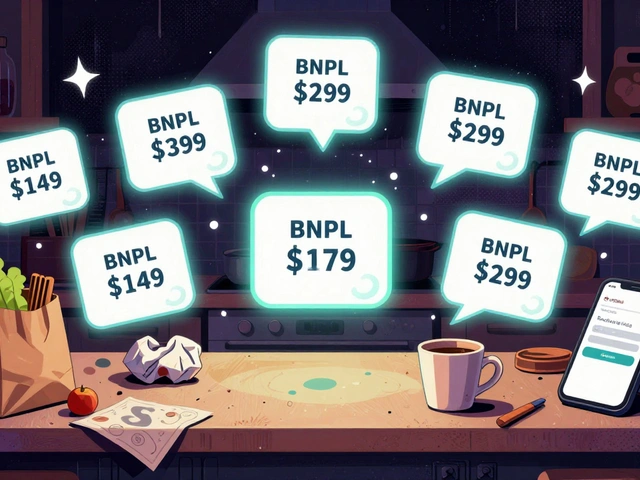When you hear "diversify your portfolio," it sounds simple: don’t put all your money in one stock. But what if the other stocks you pick move the same way? What if they all drop at the same time? That’s where correlation becomes the real key to diversification-not just owning different assets, but owning ones that don’t move in lockstep.
What Correlation Really Means
Correlation isn’t just a fancy word. It’s a number between -1.0 and +1.0 that tells you how two assets move relative to each other. If two stocks always go up and down together, their correlation is close to +1.0. If one goes up when the other goes down, it’s near -1.0. If they seem to move randomly with no pattern, it’s around 0. This isn’t theory. It’s math that’s been used since Harry Markowitz won the Nobel Prize in 1990 for proving that combining assets with low correlation reduces risk without cutting returns. His work is still the foundation of every modern portfolio. And it’s why, for decades, investors relied on a simple rule: own stocks and bonds. When stocks crashed, bonds usually rose. That was the safety net.The Stock-Bond Relationship: A Broken Safety Net?
Between 2000 and 2020, U.S. stocks and bonds had a strong negative correlation. When inflation spiked, the Fed raised rates, stocks fell-and bonds rose because their prices went up as yields fell. It worked like a pendulum. Bonds were the shock absorber. That changed in 2022. Inflation hit 9%, and the Federal Reserve slammed the brakes with the fastest rate hikes in 40 years. Bond prices crashed because higher rates make existing bonds less valuable. At the same time, investors panicked about a recession, and stocks plunged too. For the first time since 1997, stocks and bonds moved in the same direction-down. Charles Schwab called it "extremely painful." When both sides of your portfolio drop at once, there’s nowhere to hide. This wasn’t a fluke. It was a signal: correlation isn’t permanent. It shifts with economic conditions. And if you assume bonds will always protect you, you’re setting yourself up for a surprise.Why Low Correlation Is the Goal
You don’t need perfect negative correlation to benefit from diversification. Even a correlation of 0.3 or -0.2 helps. Carmignac’s research shows that any correlation below 1.0 provides some risk reduction. That’s why holding corporate bonds, government bonds, commodities, real estate, and international stocks together works better than just owning five tech stocks. Think of it like weather. If you live in Missoula and pack only winter coats, you’re fine in January-but not in July. But if you pack a mix: light jackets, rain gear, sun hats-you’re ready for any season. Same with assets. Different assets react to different economic conditions. Stocks do well in growth. Bonds do well in slowdowns. Gold does well in inflation. Real estate can hold value when currencies weaken. The trick is finding assets that don’t all respond the same way to the same event. That’s where correlation data comes in. You don’t just pick assets because they sound different. You pick them because their historical price movements show they don’t move together.
Correlation Changes-And So Should Your Strategy
Here’s the catch: correlation isn’t fixed. In 2021, Hermès and Veolia were the least correlated stocks in France’s CAC 40 index. In 2022? Thales and TotalEnergies were. The same companies. Different results. Why? Because inflation, supply chains, and interest rates reshaped how those businesses performed. This isn’t just about countries. It’s about sectors. Energy stocks might have low correlation with tech during a recession but high correlation during an oil shock. Real estate investment trusts (REITs) used to act like bonds. Now, with rising rates, they’re behaving more like stocks. That means you can’t set it and forget it. If you’re holding a portfolio based on correlations from 2015, you’re flying blind. You need to check correlations every year. At least. Look at rolling 12-month or 36-month correlations. Use free tools from brokerage platforms or financial data sites. If your bond fund and your tech ETF are suddenly moving together, it’s time to rethink.What to Do When Everything Moves Together
When stocks and bonds both drop, what’s left? That’s when investors turn to alternatives. Not because they’re flashy, but because they’re different. - Commodities like gold, oil, or agricultural products often rise when inflation spikes and currencies fall. They don’t care if the S&P 500 is up or down. - Currencies like the Swiss franc or Japanese yen can act as safe havens during global turmoil. - Private assets like infrastructure funds or private credit often have low correlation to public markets because they’re not traded daily. - Short-term Treasury bills are the only asset class that consistently holds value when everything else is falling. They’re not sexy, but in 2022, they were the only thing that didn’t lose money. The goal isn’t to chase returns. It’s to reduce the chance that every part of your portfolio collapses at once.
How to Build a Correlation-Aware Portfolio
Start with this:- Identify your core holdings: stocks, bonds, maybe real estate.
- Check their correlation over the last 3 years-not just the last 12 months. Look at monthly returns.
- If stocks and bonds are above +0.5, add something with low or negative correlation: commodities, gold, or even cash equivalents.
- Use ETFs to get exposure. For example, GLD for gold, ICF for infrastructure, or TIP for inflation-protected bonds.
- Rebalance once a year. If one asset class has grown too big, sell some and buy more of the ones that lagged.






Comments
Bro, I just realized my portfolio is basically a 2022 disaster replay. Bonds and stocks both tanking? I thought bonds were the chill uncle who shows up with snacks when things go sideways. Turns out he’s just as panicked as everyone else. Time to dump the vanilla 60/40 and go full chaos mode: gold ETFs, TIPS, and maybe even some infrastructure funds. Who cares if it sounds weird? At least I won’t be crying into my coffee when the next crash hits.
Also, short-term T-bills? Yeah, they’re boring as hell-but they don’t lie. I’m putting 15% in them now. No drama. Just cash that doesn’t care if the Fed’s having a bad day.
This is precisely why passive investing is a myth perpetuated by financial influencers who’ve never seen a real bear market. Correlation isn’t a static metric-it’s a living, breathing beast shaped by monetary policy, inflation regimes, and geopolitical shocks. The notion that ‘diversification’ means owning ‘different’ assets is dangerously naive. What matters is behavioral divergence under stress. Your ‘diversified’ portfolio of tech stocks and bond ETFs? They’re both just proxies for Fed liquidity. You need real non-correlated alpha: commodities with physical delivery, private credit with illiquidity premiums, and yes-even cash in non-sovereign currencies. The 2022 event wasn’t an anomaly; it was the new baseline. If you’re still using 2015 correlation matrices, you’re not investing-you’re gambling with a loaded dice.
It makes me think, deeply, about how we humans always seek patterns-even when the world is too complex for them. We want to believe that bonds will always save us, that gold will always shine in chaos, that real estate will never fall. But life doesn’t work like that. Correlation is a mirror, not a map. It reflects what has been, not what will be. And when the Fed raises rates, when inflation bites, when supply chains break-it’s not just numbers changing, it’s human behavior changing. Companies pivot, investors panic, capital flows shift. So maybe the real diversification isn’t in assets at all, but in mindset. To hold many things, yes-but also to hold them lightly. To understand that safety is not a fixed point, but a dance. And we must keep moving, keep observing, keep adjusting. Not because we fear loss, but because we honor uncertainty. And in that, perhaps, lies true wisdom.
I read this and felt both scared and hopeful. Scared because I thought I knew what I was doing. Hopeful because now I know I can learn to do it better.
Just threw my 60/40 out the window. T-bills and gold ETFs only now. Bonds are just corporate bonds with a bad haircut.